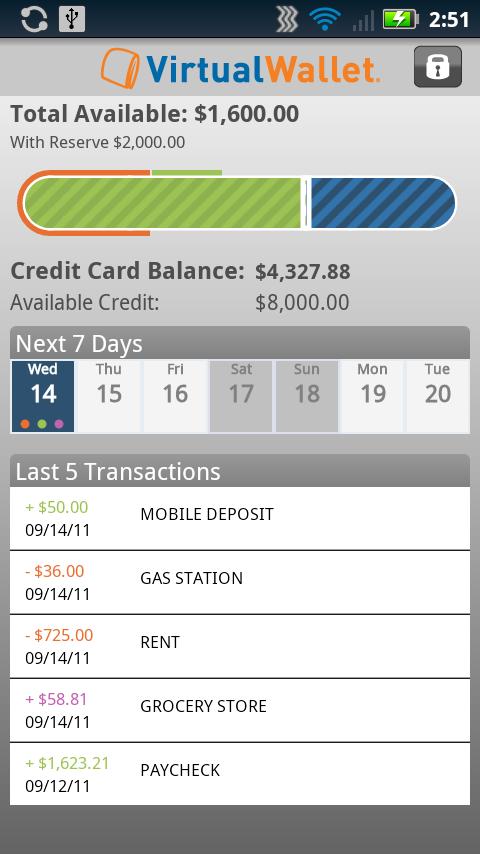
If you are wondering how to verify your card for Apple Pay, then you are not alone. This tutorial will walk you through the steps to add your card to Apple Pay. After you've added a new card, ensure that you check the Wallet app to find the card's verification code and click the "Apply” button. Now you can use Apple Pay to purchase! However, before you go ahead and make purchases using Apple Pay, be sure to read the rest this article for information on how to verify your Apple Pay card.
Adding a card to Apple Pay
To add a card to Apple Pay, first you must link your card to your device. There will be many problems if your card isn't yet linked. It may be helpful to remove your card from the iCloud billing system first. You can then follow the onscreen prompts to add another card. If these steps don't work, try removing the problematic card and restarting the device.

You can also scan the barcode of your iPhone to add your creditcard. This can easily be done by visiting a company’s website and signing up with your Apple ID. You can then scan the QR code with a code scanner, or by email. Depending on the card, you may need to do some further work to get the card on your iPhone. If the scan does not work, try adding the card using a different method, such as AirDrop.
If Apple Pay is new to you, follow these steps to get it set up. Once Apple Pay is set up, you can add cards using your iPhone/Apple Watch. Once your card has been added, you can begin using it at retail stores. To make the payment, pair your Apple Watch with an iPhone. You'll be able to take your Apple Watch with you wherever you go.
Adding a credit card to the Wallet app
The process of adding a card to your Wallet application is simple. Depending on the card issuer, you may need to provide more information to the app before you can use it. Apple Pay is now possible after you have verified your credit card. Open the Wallet settings on you device. Select Wallet & Apple Pay and go to System Preferences or Settings. Follow the onscreen instructions to add a card. If your card doesn't appear, contact your issuer. They will be happy to remove it.
You can also add your card to your Apple Watch and sign in with it. Make sure you have the security settings turned on. Otherwise, you may need to enter your security code. Apple Pay will not be able to use your card without the security code. When your card has been verified you will be prompted for acceptance of the Apple Pay terms and conditions. If you have previously added your card via the Wallet App, you should be able access it.

To manage Apple Pay, you need to open the Settings App. To manage Apple Pay, open the Settings app. Tap "Wallet and Apple Pay" before you tap "Cards." The Wallet will display a list with the cards you have added. To view more information about a card or contact information, you can tap the card. Some cards will display a list with recent transactions. You can contact your issuer if you have any questions about security.
FAQ
Which fund is best suited for beginners?
When investing, the most important thing is to make sure you only do what you're best at. If you have been trading forex, then start off by using an online broker such as FXCM. They offer free training and support, which is essential if you want to learn how to trade successfully.
If you are not confident enough to use an electronic broker, then you should look for a local branch where you can meet trader face to face. You can ask them questions and they will help you better understand trading.
Next would be to select a platform to trade. CFD platforms and Forex trading can often be confusing for traders. Both types of trading involve speculation. However, Forex has some advantages over CFDs because it involves actual currency exchange, while CFDs simply track the price movements of a stock without actually exchanging currencies.
Forex is much easier to predict future trends than CFDs.
Forex is volatile and can prove risky. For this reason, traders often prefer to stick with CFDs.
We recommend you start off with Forex. However, once you become comfortable with it we recommend moving on to CFDs.
What should I look for when choosing a brokerage firm?
There are two main things you need to look at when choosing a brokerage firm:
-
Fees – How much commission do you have to pay per trade?
-
Customer Service - Can you expect to get great customer service when something goes wrong?
Look for a company with great customer service and low fees. You won't regret making this choice.
At what age should you start investing?
On average, $2,000 is spent annually on retirement savings. Start saving now to ensure a comfortable retirement. You may not have enough money for retirement if you do not start saving.
You need to save as much as possible while you're working -- and then continue saving after you stop working.
The sooner you start, you will achieve your goals quicker.
When you start saving, consider putting aside 10% of every paycheck or bonus. You might also consider investing in employer-based plans, such as 401 (k)s.
Make sure to contribute at least enough to cover your current expenses. You can then increase your contribution.
Do I need to know anything about finance before I start investing?
You don't require any financial expertise to make sound decisions.
All you need is commonsense.
That said, here are some basic tips that will help you avoid mistakes when you invest your hard-earned cash.
Be cautious with the amount you borrow.
Don't fall into debt simply because you think you could make money.
It is important to be aware of the potential risks involved with certain investments.
These include taxes and inflation.
Finally, never let emotions cloud your judgment.
Remember that investing isn’t gambling. It takes skill and discipline to succeed at it.
This is all you need to do.
Can I get my investment back?
Yes, it is possible to lose everything. There is no 100% guarantee of success. However, there are ways to reduce the risk of loss.
Diversifying your portfolio can help you do that. Diversification helps spread out the risk among different assets.
You can also use stop losses. Stop Losses let you sell shares before they decline. This will reduce your market exposure.
Finally, you can use margin trading. Margin Trading allows to borrow funds from a bank or broker in order to purchase more stock that you actually own. This increases your chances of making profits.
Is it really worth investing in gold?
Since ancient times, gold has been around. It has maintained its value throughout history.
Gold prices are subject to fluctuation, just like any other commodity. If the price increases, you will earn a profit. When the price falls, you will suffer a loss.
It doesn't matter if you choose to invest in gold, it all comes down to timing.
What kind of investment vehicle should I use?
There are two main options available when it comes to investing: stocks and bonds.
Stocks represent ownership stakes in companies. Stocks are more profitable than bonds because they pay interest monthly, rather than annually.
Stocks are the best way to quickly create wealth.
Bonds are safer investments, but yield lower returns.
There are many other types and types of investments.
They include real-estate, precious metals (precious metals), art, collectibles, private businesses, and other assets.
Statistics
- According to the Federal Reserve of St. Louis, only about half of millennials (those born from 1981-1996) are invested in the stock market. (schwab.com)
- If your stock drops 10% below its purchase price, you have the opportunity to sell that stock to someone else and still retain 90% of your risk capital. (investopedia.com)
- They charge a small fee for portfolio management, generally around 0.25% of your account balance. (nerdwallet.com)
- Over time, the index has returned about 10 percent annually. (bankrate.com)
External Links
How To
How to make stocks your investment
Investing is a popular way to make money. This is also a great way to earn passive income, without having to work too hard. You don't need to have much capital to invest. There are plenty of opportunities. All you need to do is know where and what to look for. The following article will teach you how to invest in the stock market.
Stocks can be described as shares in the ownership of companies. There are two types, common stocks and preferable stocks. The public trades preferred stocks while the common stock is traded. Public shares trade on the stock market. They are priced based on current earnings, assets, and the future prospects of the company. Stock investors buy stocks to make profits. This process is called speculation.
There are three key steps in purchasing stocks. First, decide whether you want individual stocks to be bought or mutual funds. Second, choose the type of investment vehicle. Third, choose how much money should you invest.
Choose Whether to Buy Individual Stocks or Mutual Funds
Mutual funds may be a better option for those who are just starting out. These mutual funds are professionally managed portfolios that include several stocks. When choosing mutual funds, consider the amount of risk you are willing to take when investing your money. There are some mutual funds that carry higher risks than others. If you are new or not familiar with investing, you may be able to hold your money in low cost funds until you learn more about the markets.
If you prefer to invest individually, you must research the companies you plan to invest in before making any purchases. You should check the price of any stock before buying it. You do not want to buy stock that is lower than it is now only for it to rise in the future.
Select your Investment Vehicle
After you have decided on whether you want to invest in individual stocks or mutual funds you will need to choose an investment vehicle. An investment vehicle can be described as another way of managing your money. You could, for example, put your money in a bank account to earn monthly interest. You could also establish a brokerage and sell individual stock.
You can also establish a self directed IRA (Individual Retirement Account), which allows for direct stock investment. Self-Directed IRAs are similar to 401(k)s, except that you can control the amount of money you contribute.
Your investment needs will dictate the best choice. Are you looking for diversification or a specific stock? Are you looking for stability or growth? Are you comfortable managing your finances?
All investors must have access to account information according to the IRS. To learn more about this requirement, visit www.irs.gov/investor/pubs/instructionsforindividualinvestors/index.html#id235800.
You should decide how much money to invest
Before you can start investing, you need to determine how much of your income will be allocated to investments. You have the option to set aside 5 percent of your total earnings or up to 100 percent. You can choose the amount that you set aside based on your goals.
You might not be comfortable investing too much money if you're just starting to save for your retirement. If you plan to retire in five years, 50 percent of your income could be committed to investments.
You need to keep in mind that your return on investment will be affected by how much money you invest. Before you decide how much of your income you will invest, consider your long-term financial goals.